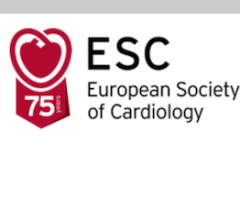
Abbott's Hi-Torque BMW II guidewire.
Tiny guide wires are designed to navigate vessels to reach a lesion or vessel segment. Once the tip of the device arrives at its destination, it acts as a guide that larger catheters can rapidly follow for easier delivery to the treatment site.
Many workhorse guide wires are indicated to facilitate the placement of balloon dilatation catheters during percutaneous transluminal coronary angioplasty (PTCA) and percutaneous transluminal angioplasty (PTA). PTCA refers to angioplasty performed in the coronary arteries, while PTA refers to angioplasty performed in other arteries.
Wires are characterized by their pushability, steerability, torque and opacity. Pushability is the amount of force needed to advance the wire. Steerability is the ability and responsiveness of the wire tip to navigate vessels. Torque is the response of the wire to turning by the operator when navigating vessels. Its opacity is its level of visibility under fluoroscopic imaging.
Guide wires come in two basic configurations: Solid steel or nitinol core wires and solid core wire wrapped in a smaller wire coil or braid. Coiled or braided wires offer a large amount of flexibility, pushability and kink resistance. Some of Boston Scientific’s guide wires use a nitinol tube with micro-cut slots instead of braided wire to improve torque control.
Nitinol wire, used by itself or braided with stainless steel, helps increase flexibility and allows the wire to spring back into shape after navigating a tortuous vessel segment. Guide wires usually have a floppy tip and a stiff body to enable easy tip navigation, with good pushability offered by the stiffer section of the wire.
Some wires are coated with a polymer, such as silicone or polytetrafluoroethylene (PTFE), to increase lubricity. Hydrophilic coatings reduce friction during deployment and for easier movement in tortuous vessels.
The wires are sometimes hard to see on fluoroscopic X-ray imaging, so radiopaque markers are commonly used to improve visibility. These include gold marker bands or the addition of a platinum wire.
The tips of the wires come in various configurations, including a “J” curve, a variety of angles or straight tips to help navigate various vessel anatomies.
Wire diameters are measured in thousandths of an inch, usually between 0.014 and 0.038 inches. Lengths are measured in centimeters, ranging from 80 to 450 cm.
Watch the VIDEO “The Basics of Interventional Guidewire Design and Function.”
Intervantional Guidewire Comparison Chart
This article served as an introduction for a guidewire comparison chart. The chart can be accessed at www.dicardiology.com/content/guidewires. Access requires a login, but it is free and only takes a minute to gain access.
Recenty Released Interventional Guide Wires
Last October, Boston Scientific introduced the Journey guide wire, a 0.014-inch wire designed to address physician needs in treating arteries below the knee. It features a micro-cut nitinol sleeve designed to provide efficient transmission of torque energy for more precise turn-by-turn response and control compared to conventional spring-coil guide wires. The nitinol distal core and hydrophilic coating are designed to enhance wire durability, tactile response and device delivery for improved overall performance.
In May 2010, Volcano introduced an improved fractional flow reserve (FFR) guide wire to speed treatment of multivessel disease. These blockages usually have more tortuous tissue to navigate and it takes longer to guide several devices over-the-wire to deliver treatment. The PrimeWire Prestige pressure guide wire is designed to reduce the number of catheters needed, combining FFR with a guide wire.
In September 2009, Terumo launched its latest version of its Glidewire, the Glidewire Advantage peripheral guide wire. It offers a single wire that enables the operator to both cross the lesion and deliver interventional devices such as balloons and stents. It combines Terumo’s Glidewire construction on the distal 25 cm with a unique spiral PTFE coating on the proximal end. The result is a guide wire that easily navigates and crosses the lesion, while also providing the operator with excellent tactile feel and support for secure device placement. These two wire sections are seamlessly fused together using Terumo’s proprietary DuoCore technology.


 November 17, 2025
November 17, 2025 









